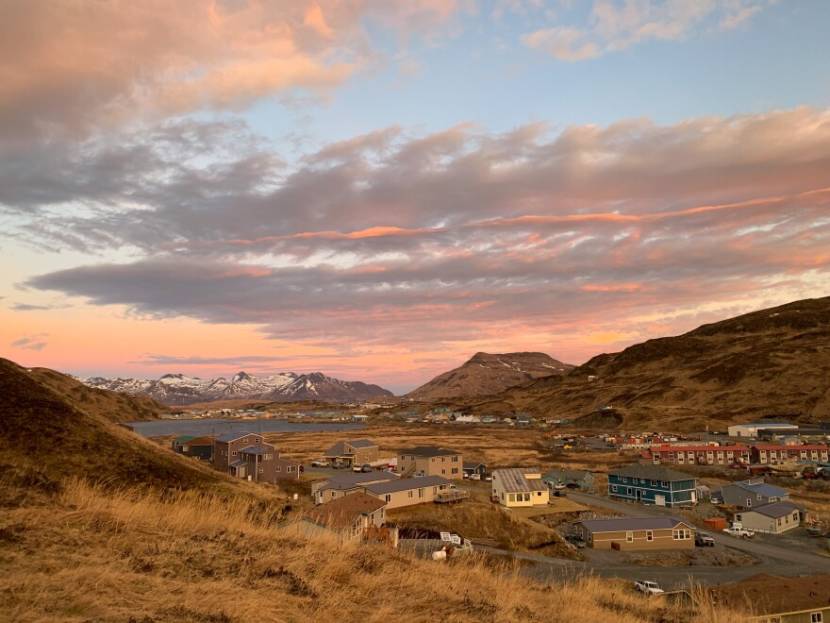
Unalaska has set a new record for the warmest Christmas in Alaska.
Temperatures in the island community soared to 56 degrees on Saturday. That broke the prior Christmas Day record of 55 degrees set in the Southeast Alaska community of Metlakatla in 2009, according to climatologist Rick Thoman, who works for the Alaska Center for Climate Assessment and Policy at the University of Alaska Fairbanks.
There’s no record of a warmer Christmas in Alaska than 56 degrees, he said, and there’s been climate stations keeping track for at least a century.
“We can probably say it’s the warmest [Christmas] in at least a century, and realistically, more like 110, maybe 120 years,” Thoman said.
Over Christmas weekend Kodiak Island broke the record for the warmest December temperature in the state. The Kodiak Tide Gauge station on the east side of the island recorded 67 degrees on Sunday. That balmy high comes after one of the coldest Novembers on record for the island.
“It was a very rare occurrence,” said Tim Markle, a meteorologist with the National Weather Service in Anchorage. “This is really due to a really strong kind of warm ridge of high pressure that was just sitting just to the southwest of Kodiak, and very warm temperatures aloft and that, combined with those westerly winds along the mountains right along the spine of the island.”
Those downsloping winds compress and warm as they come off the mountains. The entire Alaskan Peninsula saw near record highs this weekend. Kodiak’s Benny Benson Airport also set its own December record of 65 degrees on Sunday.
This weekend’s warm weather comes after Kodiak Island experienced what meteorologists say could have been its coldest November on record – measuring equipment on the island was broken for the first nine days of the month. Data for the rest of the month shows temperature swings between 2 and 24 degrees below normal.
Markle says record-breaking events like 60-degree weather in December can’t be directly linked to climate change, but it does increase the likelihood of extreme temperature swings.
“Things are just becoming much more variable,” he said. “We’re kind of seeing that a little bit with the pattern we’ve been in with a very cold, almost record-breaking November followed by record-breaking warmth across the state at least for the month of December.”
Rick Thoman said unusual weather across the state over the weekend is all linked to a massive high pressure system over the Gulf of Alaska. It’s among the biggest high pressure systems ever recorded in that part of the world for this time of year, and it made warm winds blow clockwise across the Aleutians.
“In this case, there is a direct connection from just west of Hawaii, straight north, across the Aleutians into the Bering Sea,” he said. “And then that warm, moist, tropical air turns the corner and heads due eastward across mainland Alaska.”
In Interior Alaska, the system produced a storm like the area hasn’t seen in nearly a century. The rain and snow caused massive power outages and closed down highways in the Fairbanks area over the weekend and the storm picked back up again Tuesday.
“The amount of moisture that came north with this most recent push – there’s really nothing like it probably since the mid-1930s in the climate record,” Thoman said.
As the climate continues to warm, he said, Alaskans will likely keep experiencing these abnormal weather patterns and temperatures.
“In a warming environment, warmer ocean temperatures are going to have more moisture. And, you know, we put the thumb on the scales for these kinds of events,” Thoman said.